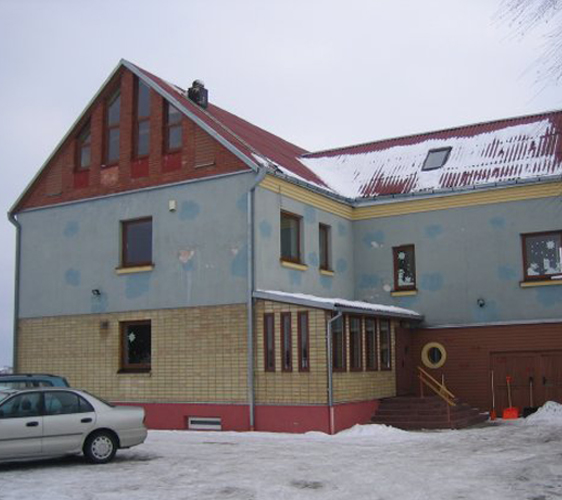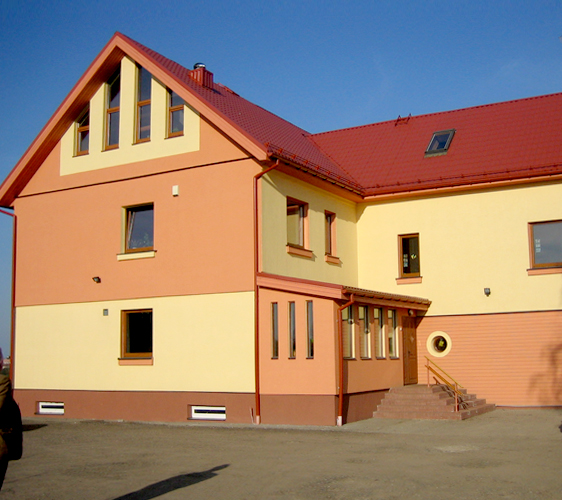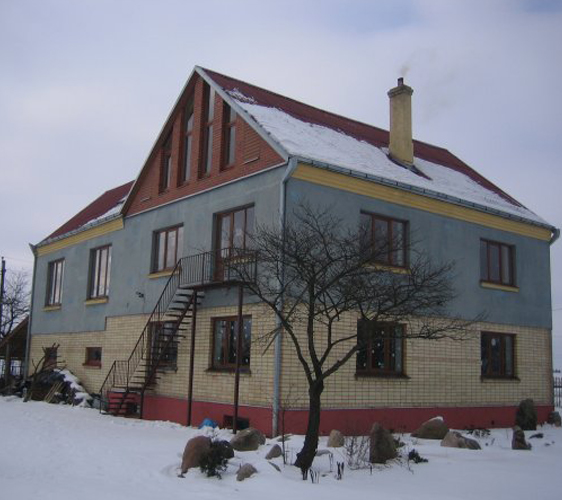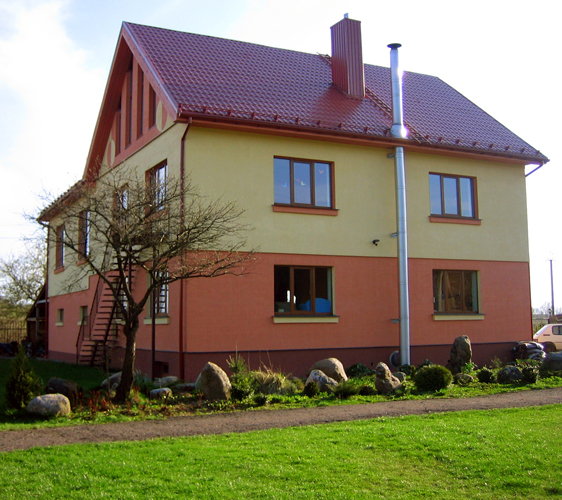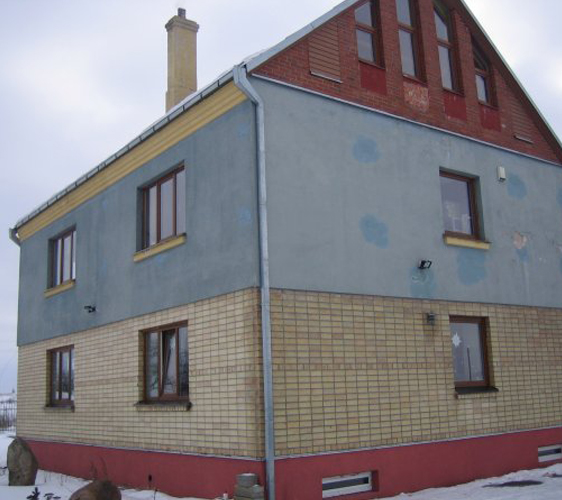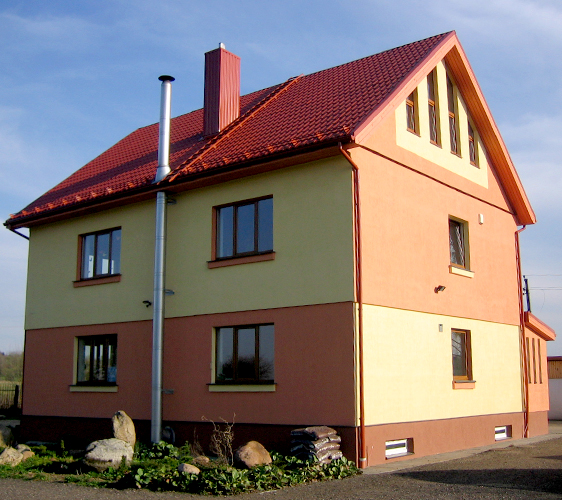Kindergarten in Vilnius
Double-skin masonry 2 x 11 cm, cold winters. Instead of facade insulation with polystyrene on the advice of a German building expert: Core insulation with cellulose and ClimateCoating® inside and outside; Golden Globe Award 2011
Short summary
The kindergarten “Saules Gojus” (Sun Grove) is located on the outskirts of Vilnius. With approx. 500 m² the house offers space for up to 45 children. As part of the first renovation phase in 2004, core insulation made of cellulose flakes was blown into the air gap of the exterior walls. In the second phase, the interior and exterior were painted with the thermoceramic membrane technology ClimateCoating® to improve thermal insulation. As a result, heating costs were reduced and cooling times extended – with improved thermal comfort and a reduced risk of mould even in problem areas. In addition to long-lasting weather protection of the dehumidified wall, the coating protects against heat radiation in winter and heating up in summer.
Evaluation criteria
- Project Objective:
energetic retrofitting, max. Results with a small budget of a young family-run company (economic efficiency), durable ecological building materials with structural-physical and health safety. - Innovative approach:
not doing what everyone around is doing – instead combining technologies/systems, using surface active coating. - Cost/Benefit:
maximum upgrading of the building at modest financial cost (see also: project objective), long maintenance intervals, the objective (high benefit at low cost) was achieved. - Multiplicability:
In principle, yes, although the individual case must always be examined – in this case the special feature was the core insulation, other combinations are also possible (cf. project “Wood fibre ETICS in Berlin”). - Environmental Sustainability:
is given to a high degree, toxic and pollutant-free building materials, as a result emission reductions are given.
In the first stage of the renovation, the sanitary facilities and the entire electrical system were renewed and the house was adapted to the needs of the children. It was important to improve the energy efficiency of the exterior walls, which were double-shell masonry with an air gap of 7 cm and a U-value of 0.8 W/m²K. Although the U-value is not the only decisive factor for the energy balance of the building, it is nevertheless a parameter that must be taken into account in winter temperatures of around -20°C.
The expert advised against covering the façade with polystyrene panels as an ETICS, as was often and readily done throughout the country. One important reason is that it is considered absurd to build tighter from the inside out – even more so when it is known that calculations according to standards, including the Glaser method, do not produce realistic results (Hauser, 2003).
The U-value could be improved to 0.37 W/m²K by core insulation with EKOVATA cellulose flakes, whereby a decisive advantage is that in the end a fully sorption-capable wall construction with capillary conductivity is available.
In February, construction measures were discussed during a property inspection with the following focal points: Rainproofing of windows in the attic, plaster repairs to the façade, insulation of soffits, replacement of foam under the window plates, painting of the façade and interior, renewal of the south wooden gable, painting of the wooden gable aisle strips, reduction of vibrations in the grid ceiling above the basement.
On 11.02.2007 it was -23°C at the outskirts of Vilnius. On average, room temperatures of 19°C and wall surface temperatures of 16°C were measured. The measurements with the pyrometer for non-contact temperature measurement showed considerable temperature differences of the wall surface temperatures of the facade. This shows what the term “solar gains of opaque components” means: the heat flow from 20°C to -10°C is less than the heat flow from 20°C to -20°C.
In order to improve the energy quality of the exterior walls, the building expert advised the use of ClimateCoating®. Reasons for this include protection against solar load in summer, compensation of thermal bridges, protection against driving rain, improvement of thermal comfort. The practical benefits have proven this planning approach right, the following experience report is self-explanatory.
“We used ClimateCoating® for renovation work on our kindergarten in the summer of 2007, both inside and outside. While at the beginning we had to reheat in the middle of the night and during the day, the house can now be kept warm with two heatings, even at temperatures of -20 (January 2009). We are thrilled with the properties: despite the extreme Lithuanian conditions of -20°C in winter to almost 30 degrees in summer compared to Germany, ClimateCoating® does not fade and no cracks are visible at all, neither on the wood cladding nor on the plaster – a major problem of many paints in this country and observable on almost every corner when walking through Vilnius.”

